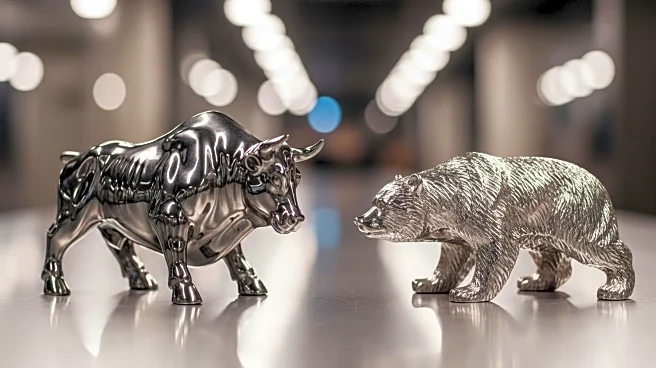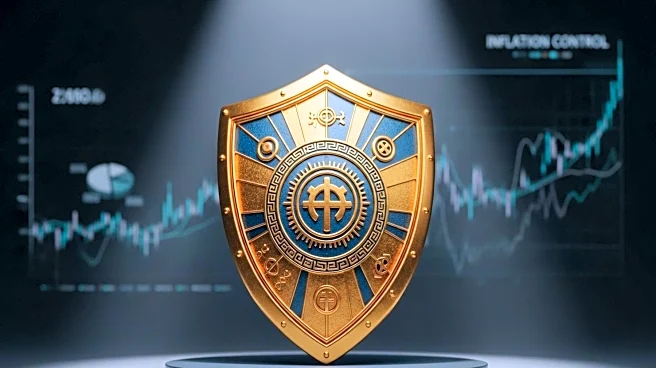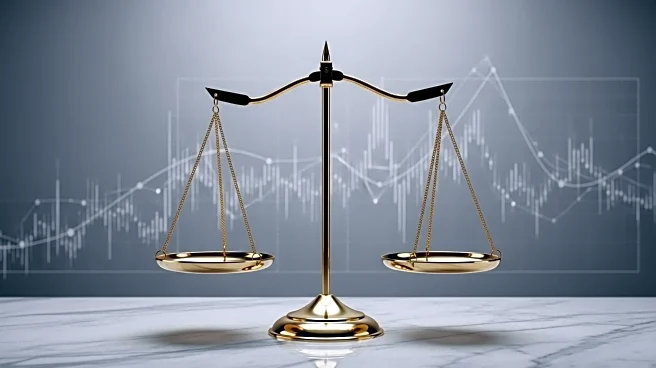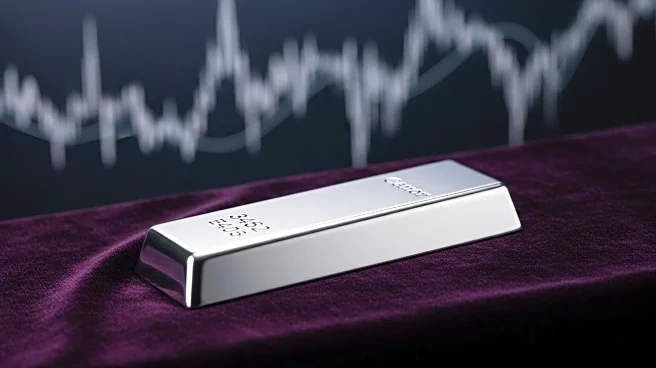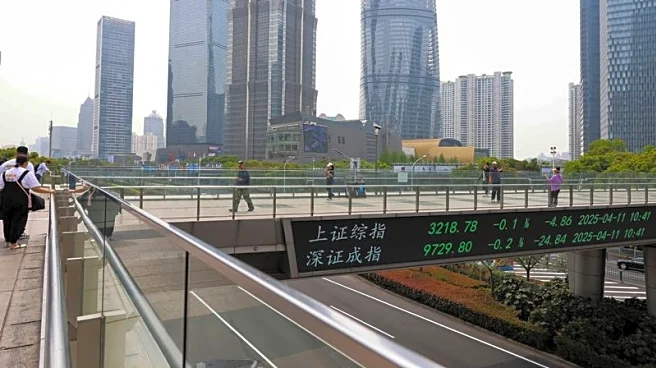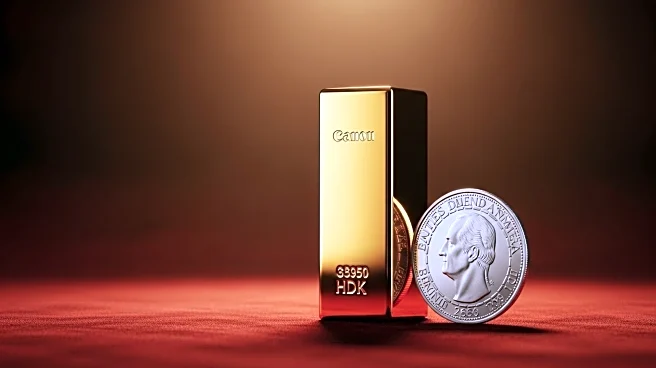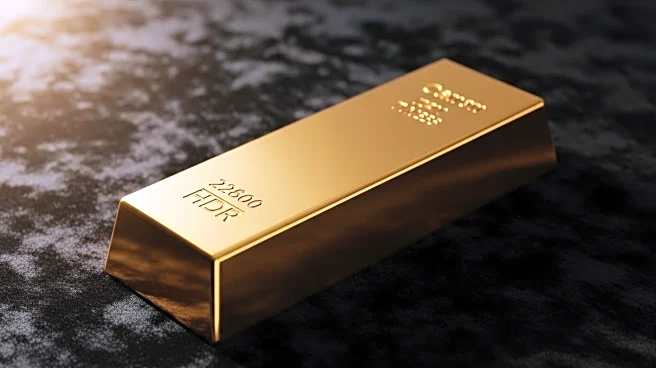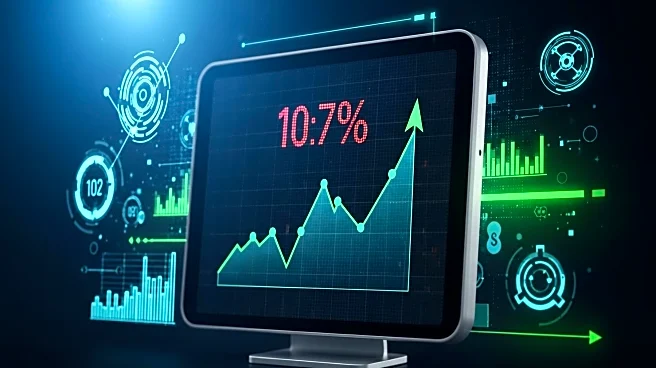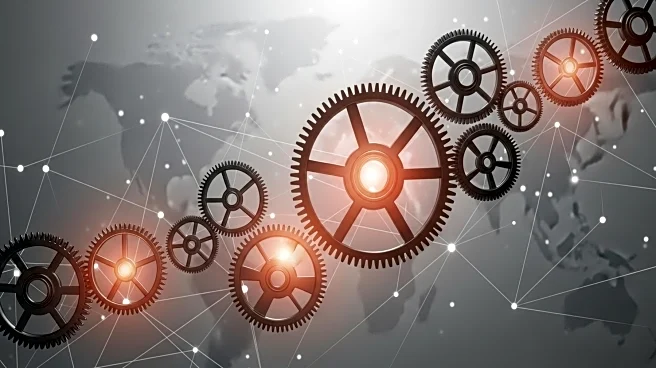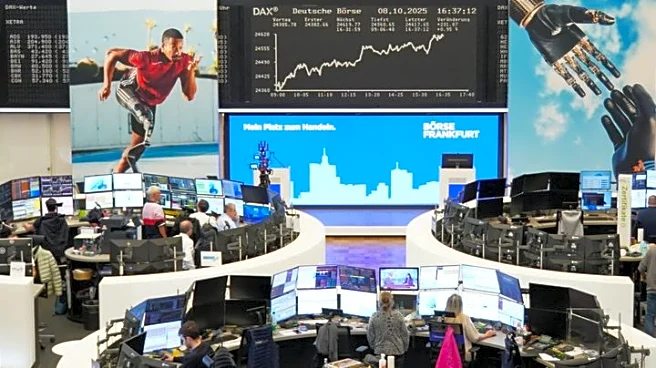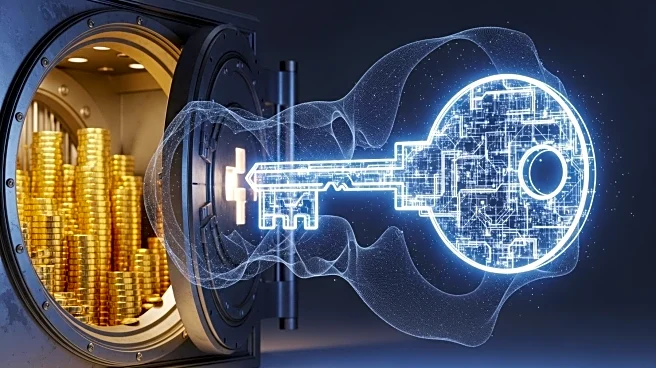What is the story about?
What's Happening?
Goldman Sachs has projected that silver prices are likely to increase in the medium term, driven by private investment flows similar to those boosting gold, especially with anticipated Federal Reserve rate cuts. However, the investment bank cautioned about heightened near-term volatility and downside risks for silver compared to gold, which benefits from demand from central banks. Silver's price is primarily driven by investment demand, with Goldman Sachs noting that for every 1,000 metric tons of new buying, prices typically rise by about 1.6%. Despite this, the silver market is less liquid and significantly smaller than the gold market, which could lead to more volatility and greater risk of price declines if investors change their positions.
Why It's Important?
The forecast by Goldman Sachs highlights the potential for silver to experience significant price movements due to its smaller market size compared to gold. This could impact investors and industries reliant on silver, such as electronics and solar panel manufacturing. The volatility in silver prices could affect investment strategies and economic forecasts, particularly if the Federal Reserve's rate cuts influence investor behavior. Additionally, the potential delay in returning silver from the U.S. due to investigations into tariffs on critical minerals could further impact supply dynamics and price stability.
What's Next?
Investors and market analysts will likely monitor the Federal Reserve's actions closely, as rate cuts could influence investment flows into silver. Additionally, the ongoing investigations into potential tariffs on critical minerals may affect silver's supply chain, potentially leading to further price volatility. Stakeholders in industries using silver, such as solar panel manufacturers, may need to consider alternative materials like copper, as noted by Goldman Sachs, to mitigate risks associated with silver price fluctuations.
Beyond the Headlines
The analysis by Goldman Sachs also touches on the structural differences between silver and gold markets, particularly the lack of central bank demand for silver. This could lead to long-term shifts in investment strategies, as silver's industrial demand, while significant, may not provide the same price support as gold. The substitution of silver with cheaper materials in solar panel production could also influence the metal's long-term demand and price trajectory.
AI Generated Content
Do you find this article useful?


